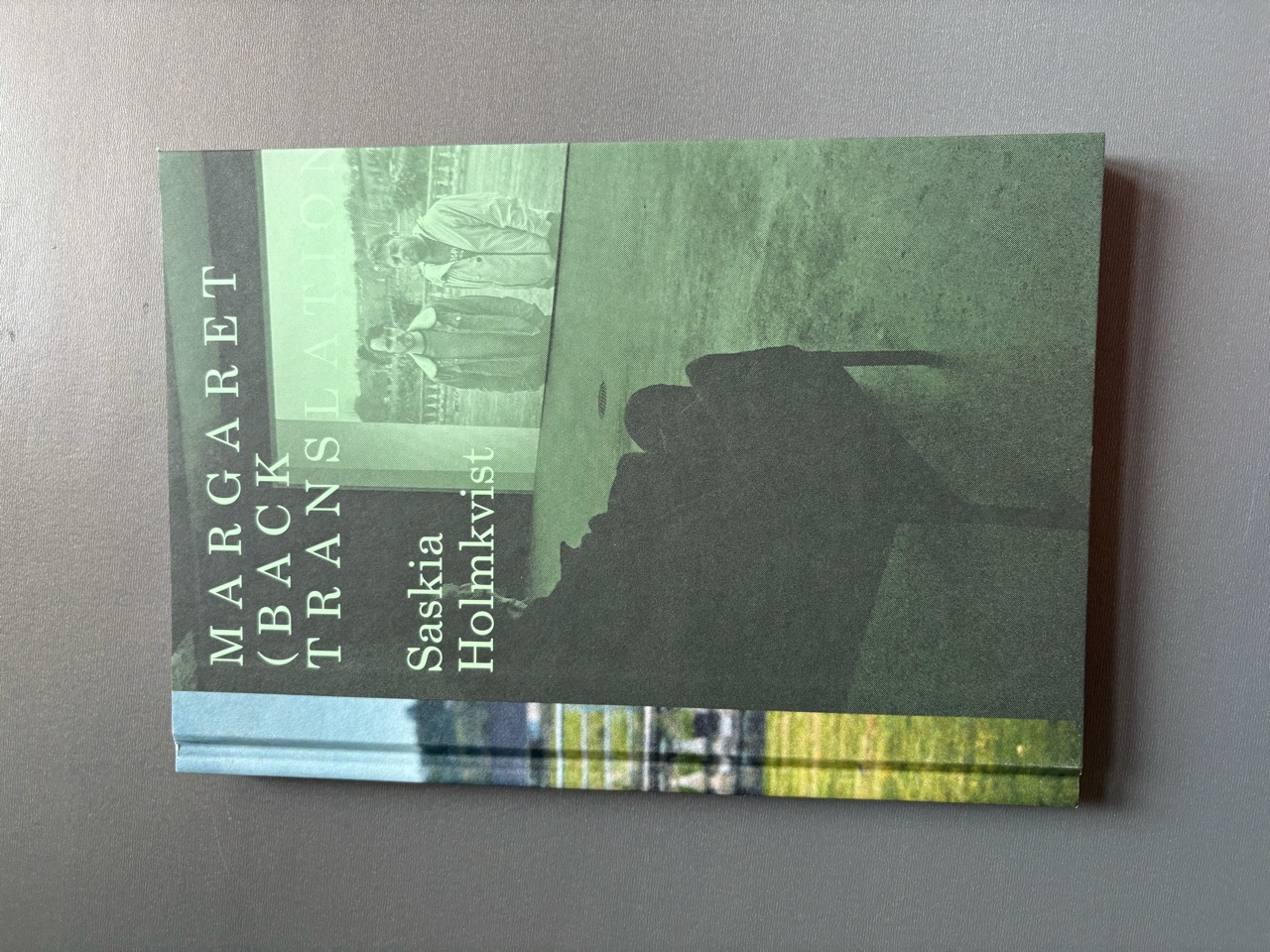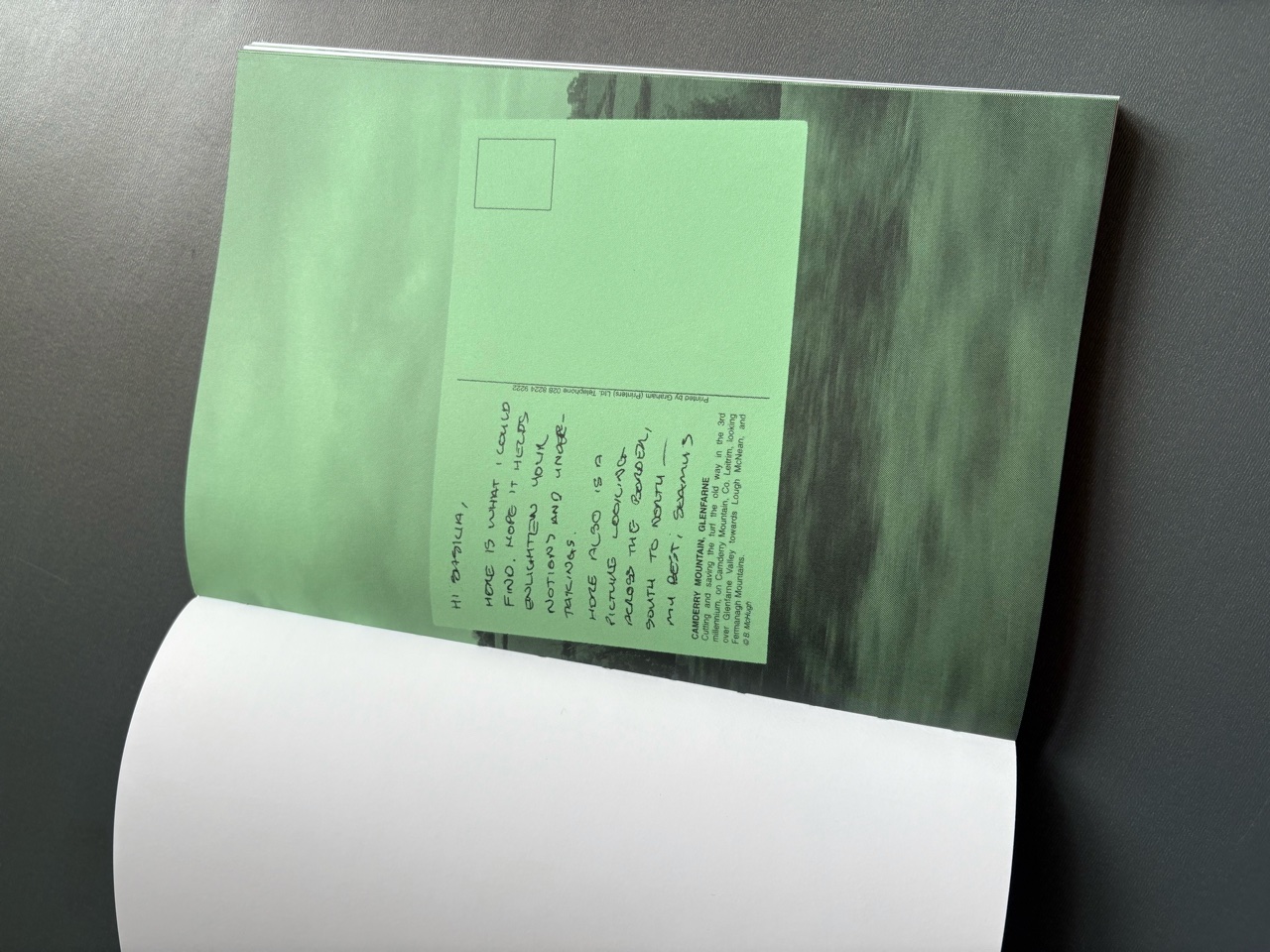Book Release: Margaret (Back Translation) by Saskia Holmkvist
Saskia Holmkvist's monograph evolves around her recent film Margaret (Back Translation). The film weaves together staged scenes, documentary elements and archival footage, exploring the recent history of Belfast through a series of tonally diverse scenes, by turns comic, elegiac and speculative. It involves a dialogue that speaks back to the evanescent nature of a past performance, acting as a filter through which to create new memories. The book acts in similar ways, in connecting an idiosyncratic journey to a film.
Expanding beyond the screen, the publication brings together a constellation of perspectives—artistic, theoretical, and political—that deepen the conversation around translation, memory, and historical mediation. It gathers newly commissioned and republished texts by Alice Butler, Suzanna Chan, Sara Eliassen, Sue-Ann Harding, Temi Odumosu, Manuel Pelmuş, Saskia Holmkvist, and Jan Verwoert, creating a rich and layered context around the film and its broader research concerns.
A public conversation will take place between Saskia Holmkvist, Nkule Mabaso, Mike Sperlinger and Manuel Pelmus.
Editor: Corina Oprea
Published by: Mount Analogue and Slimvolume 2025


Saskia Holmkvist (1971) is an artist based in Stockholm. She is also a teacher and, since 2014, professor in fine art at the Oslo National Academy of the Arts. For over two decades Holmkvist has worked using video, performance, and text alongside new approaches to relational work and oral archives that encompass critical listening, speculation and performative translation. She has a particular focus on contemporary history, translation processes, and ethics.
Holmkvist's practice is concerned with the limits of translation, exploring how new interactions can reshape relations and historical trajectories. Her work combines aspects of ethnography and theatre to create films and performances that relate through past artworks, language, and political movements. This serves as a source from which she abstracts to speak back through gestures, staged scenes, documentary elements and sonics into the newly mediated narrative memories which form the aesthetic and theoretical fabric of her practice.
Saskia Holmkvist's monograph evolves around her recent film Margaret (Back Translation). The film weaves together staged scenes, documentary elements and archival footage, exploring the recent history of Belfast through a series of tonally diverse scenes, by turns comic, elegiac and speculative. It involves a dialogue that speaks back to the evanescent nature of a past performance, acting as a filter through which to create new memories. The book acts in similar ways, in connecting an idiosyncratic journey to a film.
Expanding beyond the screen, the publication brings together a constellation of perspectives—artistic, theoretical, and political—that deepen the conversation around translation, memory, and historical mediation. It gathers newly commissioned and republished texts by Alice Butler, Suzanna Chan, Sara Eliassen, Sue-Ann Harding, Temi Odumosu, Manuel Pelmuş, Saskia Holmkvist, and Jan Verwoert, creating a rich and layered context around the film and its broader research concerns.
A public conversation will take place between Saskia Holmkvist, Nkule Mabaso, Mike Sperlinger and Manuel Pelmus.
Editor: Corina Oprea
Published by: Mount Analogue and Slimvolume 2025


Saskia Holmkvist (1971) is an artist based in Stockholm. She is also a teacher and, since 2014, professor in fine art at the Oslo National Academy of the Arts. For over two decades Holmkvist has worked using video, performance, and text alongside new approaches to relational work and oral archives that encompass critical listening, speculation and performative translation. She has a particular focus on contemporary history, translation processes, and ethics.
Holmkvist's practice is concerned with the limits of translation, exploring how new interactions can reshape relations and historical trajectories. Her work combines aspects of ethnography and theatre to create films and performances that relate through past artworks, language, and political movements. This serves as a source from which she abstracts to speak back through gestures, staged scenes, documentary elements and sonics into the newly mediated narrative memories which form the aesthetic and theoretical fabric of her practice.